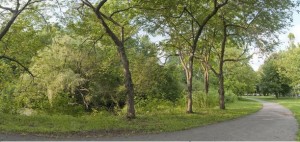
http://archive.rhynewservice.com/Fran_Gardino_speaks_about_the_Charles_River/
Ian Hendersan is an unusual jeweler who makes his pieces from insulation tubing used for electrical wires.
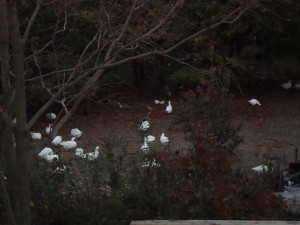
The goose meadow at the corner of the on the banks of the Charles River at the corner of the B.U. Bridge is in danger of being destroyed by the Department of Conservation and Recreation.
Click on this link to see : http://archive.rhynewservice.com/slideshows/USE-101120-Urban_Wilds/
In August 2009, the Department of Recreation and Conservation formerly announced that they would be removing 157 old or diseased trees from Memorial Drive as well as a select number of other trees in order to make room for the Boston University Bridge rehabilitation project and to restore landscape between the B.U. Bridge and the Longfellow Bridge. The DCR also said they would be removing nine healthy trees from the goose meadow. At the time, this announcement was met with furious opposition from an environmental group in Boston. The group, Friends of the Charles River White Geese, was convinced that 157 was a whitewashed figure and the DCR would end up removing up to 600 trees, most of them healthy, in order to complete their B.U. Bridge project. Member and local environmentalist Marilyn Wellons called the whole thing ‘just outrageous’. Wellons and the Friends of the Charles River White Geese have been at loggerheads with the DCR for several years now; in fact, the group was formed to protect the Charles River geese from the DCR.
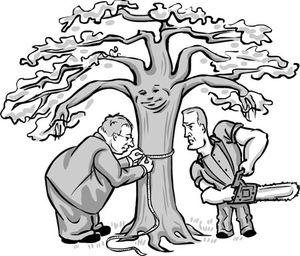
“The DCR removed a thicket of blackberry brambles from the goose meadow saying it was ‘an invasive species’ and now the geese don’t have enough to eat” Wellons said. “I’m sure they’ll end up cutting down lots and lots of trees.” The Charles River Conservancy (CRC) supported the DCR and said on its website, “Chopping down trees has and will always be an emotional issue, but in this case it’s the right choice.”
Earlier this year, the DCR cut down twelve splendid, ancient trees, near the goose meadow saying they were in the ‘wrong location.’ According to Bob La Trémouille from the Friends of the White Geese, they are slowly cutting down more trees under the nonsensical excuse of ‘vegetation management.’ Representatives from the DCR insist that they are removing only old or diseased trees that may fall at any time and are a hazard. However it begs the question, how is it that all the trees that need to be cleared for the B.U. Bridge project, diseased or old?
The DCR and the CRC, (which, incidentally works in partnership with the DCR) promised that every tree that was removed would be replaced with saplings. However, this has not happened yet. In a phone interview, CRC Volunteer Coordinator Logan Walsh said that the most recent tree planting carried out by the CRC was in mid- October when around eight London Plane saplings were planted along Memorial Drive.
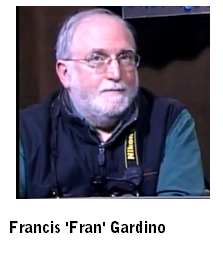
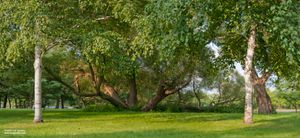
This huge tree near Herter reminded Gardino of the Akira Kurosawa’s movie ‘Ran’, a Japanese retelling of King Lear.
Francis Gardino, 58, has been an artist since he was three. Today, he is one of Boston’s most well-known and respected photographers. He has been interviewed on local television and radio channels several times and his work can be found displayed in some of Boston’s most important buildings, like Logan Airport and the Charles River Conservancy.
Gardino is best known for his beautiful, sweeping shots of Boston and its surroundings. “I go out and look, and try to see things from a different angle, a little differently from other people,” he said. He finds beautiful scenes that we miss, that are right under our noses and he portrays them through his images.
One of Gardino’s favorite locations is the Charles River. “I’ve lived in Brighton for 22 years and drive up and down the river on a daily basis.” Gardino started work on his Charles River collection around seven years ago. Now, he has created a beautiful series of images featuring the Esplanade with the Hatch Shell and the Community Boating Inc. club, Herter Park, the stretch in Cambridge with over a hundred old Sycamore trees, and Soldiers Field Road across from Harvard Stadium.
In August 2009, the Department of Conservation and Recreation (DCR) officially announced their intention to remove approximately 160 dead, old or diseased along Memorial Drive. “This prompted me to do more work. The trees have such character; I want to remember them the way they were,” Gardino said. It was a fortunate decision. Earlier this year, a massive windstorm destroyed many trees and blew down tree limbs along the Charles River--- some of which had served as Gardino’s favorite subjects.
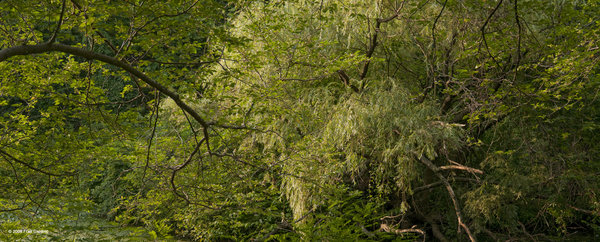
Many trees may be a couple of hundred years old. Gardino has seen these willows, ash trees, maples, sycamores and oaks since childhood, when he would try to climb them. His father, Leo Gardino had been a commercial artist. Three-year-old Fran often went up to his father’s attic studio and sat on the floor with coloring pencils and a sheet of paper. Gardino’s father also did some paintings of the Charles River, which was another factor that drew him to it. Gardino attended Massachusetts College of Art where he studied fine arts, painting and photography. “Some of my scenes were also probably inspired by the paintings of Thomas Eakins,” he said. “I went to see a show of his work 20 years ago.” He graduated in the early 1970s with a B.A. in painting. Initially he thought he was going to follow his father’s footsteps and become a commercial artist. “But my composition was terrible,” Gardino said. “This was why I took so many photography courses, to help with composition and technical aspects.”

Gardino enjoys taking photographs far more than painting, especially today, when there are so many imaging editing software available. He combines his knowledge of photography and painting, applying some of aspects he learned about painting. “I take several photographs and stich them together using ‘merge’ on Adobe Photoshop,” Gardino explained. “I try to get as many pixels as possible, because I want to print big and have people be able to walk into them.” Gardino then prints his completed images on canvas. “Previously, you had to have a big camera to do panoramic photographs, but now I can do it in pieces.”
Gardino’s panoramic photographs are enormous; the one that hangs in Terminal A of Logan Airport, ‘Coach Class Sunrise’, is a 10 foot by 30 foot photograph of white clouds at dawn. Several of his Charles River shots have similar dimensions. They also have interesting names ranging from ‘Ophelia’s Madness’ to ‘You Got Me’ and ‘I’m Goin’ Down’. All three have indeed ‘gone down’ courtesy of the DCR or the windstorm.
The use of Shakespearean names (or the names of tragic Shakespearean characters that ended up dead) is a hat tip to the Publick Theatre at Herter Park, which often puts on Shakespeare. In Gardino’s gallery, ‘Ophelia’s Madness’ is accompanied by ‘King Lear’ (a formidable looking tree, split into three trunks) and a wide, sweeping shot called ‘Polonius under a Curtain of Brush’. “That’s because Polonius was killed behind a curtain.” Gardino said.
Now, Gardino has started work on winter scenes. “I’m just trying to catch the passage of time,” he said.